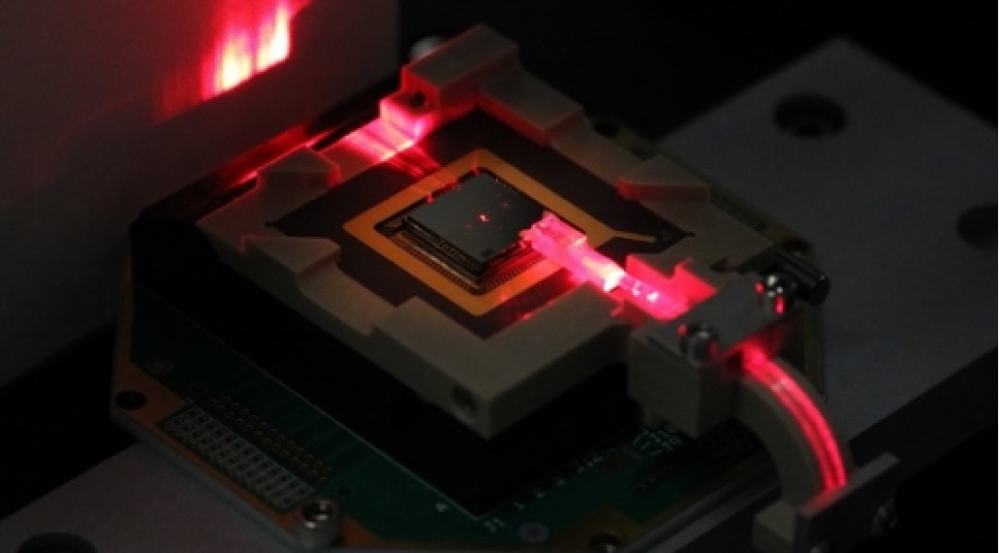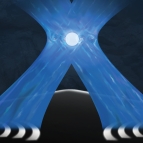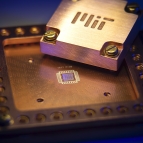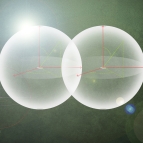Compact Optical Trapped-Ion Array Clock

Optical atomic clocks are more accurate and stable than today’s ubiquitous microwave atomic clocks. But optical clocks are not yet portable — holding them back from being used in communications, navigation, and other applications that rely on precise timing. Optical clocks work by counting the oscillations of ions as they fluoresce at very high frequencies. The setup requires a large number of free-space optics, held extremely still, to hit ions with laser light. Both the size of the optical setup and its sensitivity to vibrations are obstacles to portability.
The Compact Optical Trapped-Ion Array Clock (COTIAC) program is developing several technologies to overcome these challenges. One key technology is a chip-based ion array trap, which integrates fiber optics into a small chip, above which ions are "trapped" in place by an electric field. With this chip, laser light can be delivered directly to the ions without needing to use free-space optics, and ion fluorescence can be collected without the need for an external lens or sensor. A compact stimulated-Brillouin-scattering (SBS) laser is being developed to replace the bulk cavities typically used to stabilize the clock laser. We are also developing a novel on-chip frequency comb to convert the clock signal from an optical frequency to a radio frequency, enabling the clock timing signal to be transmitted to users.
Recently, our team demonstrated optical clock operation with stability an order of magnitude better than the best microwave clocks. This proof-of-principle result shows the promise of compact laser technologies for enabling high-performance, portable optical clocks.



